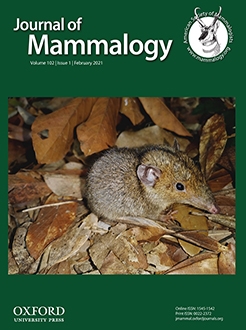Assemblages of Neotropical frugivorous bats are structured as a function of the fruit diets of species; however, ecological relationships among closely related species largely remain unknown. This study evaluated the trophic relations among three species of Carollia in a premontane forest of central Peru. To accomplish this, we first determined the diet composition of frugivorous bats to build a bat–fruit interaction network. We then assessed the trophic structure of the bat assemblage using a modularity analysis in the network. Carollia brevicauda and Carollia perspicillata were grouped apart from Carollia benkeithi. This partition occurred because the diet of C. benkeithi was more specialized, characterized by two Piper species, a Cyclanthaceae species, and Banara guianensis. Moreover, C. benkeithi, in contrast to its congeners, did not consume fruits of Ficus or Cecropia (canopy resources). This result and available information on the ecology of Carollia species suggest that small species of Carollia are more likely to carry out most of their feeding activities in the understory than are large species of the genus.
How to translate text using browser tools
27 November 2020
Trophic relationships within the genus Carollia (Chiroptera, Phyllostomidae) in a premontane forest of central Peru
Juan J. Pellón,
Jorge Rivero,
Marta Williams,
Mercedes Flores
ACCESS THE FULL ARTICLE

Journal of Mammalogy
Vol. 102 • No. 1
February 2021
Vol. 102 • No. 1
February 2021
assemblage
Carollia benkeithi
diet
frugivorous bats
interaction networks
MODULARITY
plant–animal interactions




